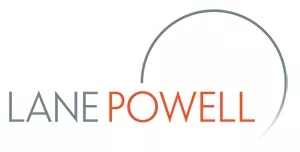Employers are having to keep on their toes when it comes to protecting employees from COVID-19. Shifts in the outbreak continue to drive rapidly changing workplace health and safety rules in the Pacific Northwest, and this is leading to dramatically different requirements being imposed by federal and state authorities. No sooner had many employers considered relaxing mask mandates and return to work policies according to federal Occupational Safety and Health Administration (OSHA) guidelines, when the later summer rise in COVID-19 cases led OSHA to publish new guidance on August 13, 2021, reinstituting some restrictions. At the same time, local and state health authorities in the Pacific Northwest have imposed new safety and health requirements, including mask mandates. To help employers with the dizzying array of changing requirements, we summarize some of those key requirements below.
What Do Employers Need to Know About OSHA's Recent Guidance?
The latest OSHA guidance entitled Protecting Workers: Guidance on Mitigating and
Preventing the Spread of COVID-19 in the Workplace states
that unvaccinated or at-risk employees should wear face coverings
indoors, maintain social distancing, participate in training,
practice good hygiene, and get tested regularly in places
of substantial or high community transmission.
However, OSHA's guidance still indicates that unvaccinated or
at-risk employees working outdoors may choose to work without
wearing face coverings. OSHA's guidance for fully vaccinated
employees mirrors that published by the Center for Disease Control
and Prevention (CDC), with both federal agencies recommending that
vaccinated employees:
- Wear a mask in public indoor settings in areas of substantial
or high transmission;
- Consider wearing a mask regardless of level of transmission;
and
- Get tested 3-5 days following a known exposure to someone with
suspected or confirmed COVID-19, and wear a mask in public indoor
settings for 14 days after exposure or until a negative test
result.
OSHA's guidance further encourages employers to work with
employees to implement multi-layered interventions to protect
unvaccinated or at-risk workers and mitigate the spread of
COVID-19. OSHA recommends that employers consider the following
measures to mitigate and prevent COVID-19 from spreading in the
workplace:
- Grant paid time off for employees to get vaccinated and recover
from its side effects;
- Instruct workers to stay home if they are (1) infected, (2)
unvaccinated and come into close contact with someone that tested
positive, or (3) experience any COVID-19 symptoms;
- Suggest or require (1) unvaccinated customers, visitors, or
guests to wear face coverings in public-facing workplaces, and (2)
all customers, visitors, or guests to wear face coverings in public
indoor settings in areas with substantial or high
transmission;
- Continue social distancing and limiting the number of
unvaccinated or at-risk employees in communal areas;
- Educate and train workers on the company's COVID-19
policies and procedures, and protect workers from retaliation
through an anonymous complaint process;
- Maintain or improve ventilation systems;
- Perform routine cleaning and disinfection; and
- Record and report COVID-19 infections and deaths as required
under the mandatory OSHA rules in 29 C.F.R. § 1904, as well as
following any other OSHA regulations applicable to the
employer.
OSHA's guidance further suggests that employers should
assess whether their workplace is considered
"higher-risk" and should implement additional
protections, based on the following factors:
- Whether employees work in close proximity to one another, such
as production/assembly lines, busy retail settings, or when
clocking in/out, during breaks, or in locker/changing rooms;
- Have prolonged closeness to coworkers, such as for 6-12 hours
per shift;
- Work in spaces where respiratory particles can be more easily
transmitted, such as poorly ventilated spaces, or common surfaces
or objects; or
- Other factors such as (1) shared transportation, (2) frequent
contact with other individuals in the community, or (3) communal
living quarters.
For higher-risk workplaces, OSHA's guidance suggests that
employers take additional precautions, including:
- Staggering break times, time punching, and arrival/departure
times;
- Expanding breakrooms and restrooms;
- Improving ventilation and barriers; and
- Adding visual cues for social distancing.
OSHA's guidance is directed to all industries that are not specifically addressed otherwise (such as the healthcare industry). Importantly, OSHA's guidance states that it "is not a standard or regulation, and it creates no new legal obligations" — except where mandatory OSHA standards exist. This should give some comfort to those employers who are not currently complying with OSHA's guidance, but it also does not provide immunity to employers. Indeed, employers remain obligated under the general duty clause of the federal Occupational Safety and Health Act of 1970 to provide employees with a "place of employment which [is] free from recognized hazards that are causing or are likely to cause death or serious physical harm to [its] employees."
What Do Pacific Northwest Employers Need to Know About State and Local Health and Safety Rules?
Certain states, such as Oregon and Washington, administer their own OSHA plans. These state plans typically replace or supplement federal OSHA standards, and often impose rules that exceed federal OSHA guidelines, impose additional health and safety requirements, and may even impose penalties and provide enforcement obligations.
Oregon's Updated OSHA Guidelines: The
state of Oregon administers its own state
plan that is enforced by "Oregon OSHA," an
agency located in the state's Department of Consumer and
Business Services. Similar to federal OSHA's guidelines, Oregon
OSHA amended its administrative rules on June 30, rolling back some
of the existing COVID-19 safety protocols. This was revised
again on August 13 and 27, 2021, to account for the rise in
COVID-19 cases. Oregon's latest rules (1, 2, and 3) impose the following requirements on
employers with Oregon operations:
- Physical distancing and regular cleaning/sanitation
requirements are no longer required (consistent with the June 30
changes);
- Face covering requirements are again
required. In particular, vaccinated and unvaccinated people must
wear masks when (1) indoors and (2) outdoors if
six feet of distance cannot be maintained. Exceptions exist for
individuals in private individual workspaces, and many specific
activities (generally unrelated to employment);
- Employers responsible for indoor or outdoor spaces must (1)
ensure that employees, contractors, and volunteers comply with the
above rules, (2) make reasonable efforts to ensure customers,
guests, visitors, or other individuals comply with the above rules,
and (3) post signs at every entrance to the indoor or outdoor
spaces describing the face covering rules.
- Employers must also still comply with requirements to (1) conduct routine
ventilation maintenance and evaluation, (2) conduct an exposure
risk assessment, (3) establish and implement an infection control
plan, (4) establish and implement a process to notify exposed
employees regarding work-related contact with a COVID-19 positive
individual, (5) provide testing when requested by a local or state
health agency, and (6) comply with quarantining requirements when
an employee is exposed or infected.
Washington L&I's Updated
Guidelines: Washington also administers its
own state plan. It is enforced by the Department of
Labor and Industries (L&I), Division of Occupational Safety and
Health (DOSH). The L&I Requirements and Guidance for Preventing
COVID-19, published by DOSH on August 23, 2021, imposes
different requirements on employers in public spaces and non-public
spaces. For employers in public spaces, they must do the following
to maintain a safe, COVID-free work environment:
- Face coverings must be worn by customers and employees in
indoor spaces accessible to the public, regardless of vaccination
status;
- Businesses must post signage visible to customers at each entry
describing the face covering requirements;
- Employees with possible or confirmed COVID-19 infection must be
permitted to isolate and quarantine;
- Handwashing facilities and supplies must be made
available;
- Employees must be trained to recognize and respond to workplace
hazards; and
- Employers must assess recognized and potential hazards, and
take additional steps to protect all employees.
For employers in non-public spaces, they must do the
following:
- Fully vaccinated employees in non-public indoor spaces may be
permitted to remove face coverings, but employers must verify their
vaccination status before permitting removal; and
- Vaccinated or unvaccinated employees may remove face coverings
if they are "working alone" — if they are isolated
from interactions with others and have little to no expectation of
in-person interruptions. Examples given include:
- An employee who is the sole occupant in an office with a closed
door who is unlikely to be visited; and
- Delivery drivers with no face-to-face interaction with others
when picking up or dropping off packages.
- An employee who is the sole occupant in an office with a closed
door who is unlikely to be visited; and
Finally, L&I's recent guidance suggests (but does not
require):
- Employers should support and encourage employees to get the
vaccine;
- Continue social distancing between unvaccinated
employees;
- Maximize fresh air and air filtration;
- Provide masks to workers in outdoor crowded settings, and
- Provide a mask that is more protective than cloth
coverings.
In addition, the Washington Legislature passed the Health Emergency Labor Standards Act (HELSA), which became effective when it was signed by Governor Inslee on May 11. In addition to imposing reporting requirements for large employers with COVID outbreaks, HELSA modified workers' compensation requirements for frontline workers, and codified Governor Inslee's high-risk worker proclamation imposing accommodation requirements on employers. L&I has published helpful Questions and Answers About Protecting High-Risk Employees From Discrimination During Public Health Emergencies.
What Should Employers Do Now?
Employers with operations in the Pacific Northwest must remain
vigilant. In light of current federal and state health and safety
requirements, employers should:
- Review and update their COVID-19 safety protocols and policies
to remain compliant with the current guidance and rules, and
continue to monitor new developments and revise their policies as
needed;
- Recognize that employers must comply with all federal, state,
and local standards;
- State OSHA authorities may (and have) imposed penalties for
violations;
- State authorities are adopting mandatory vaccine requirements
for certain industries, such as healthcare and education, as
reported in our earlier Legal Update;
- Those employers whose workers are not yet regulated should be prepared for further directives.
The content of this article is intended to provide a general guide to the subject matter. Specialist advice should be sought about your specific circumstances.


